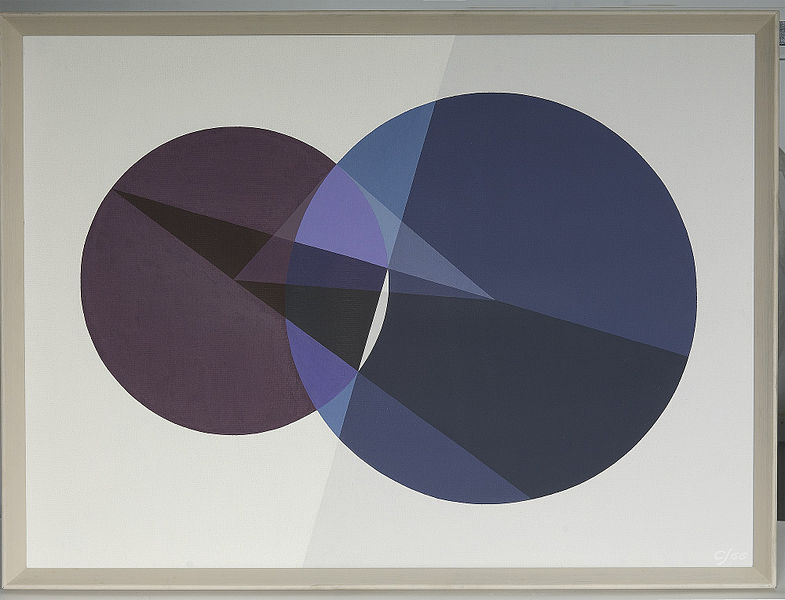
Crockett Johnson, author of the 1955 children’s book Harold and the Purple Crayon, was trained as an engineer and produced more than 100 paintings based on diagrams used in the proofs of classical theorems. This one, Polar Line of a Point and a Circle (Apollonius), appears to have been inspired by a figure in Nathan A. Court’s 1966 College Geometry. The two circles are orthogonal: They cut one another at right angles. And as the square of the line connecting their centers equals the sum of the squares of their radii, these three segments form a right triangle.
Johnson was inspired to this work by his admiration of classical Greek architecture. Sitting in a restaurant in Syracuse in 1973, he managed to construct a heptagon using seven toothpicks and the edges of a menu and a wine list, a construction that had eluded the Greeks. (He found later that Archibald Finlay had illustrated similar constructions in 1959.)
(Stephanie Cawthorne and Judy Green, “Harold and the Purple Heptagon,” Math Horizons 17:1 [2009], 5-9.)
